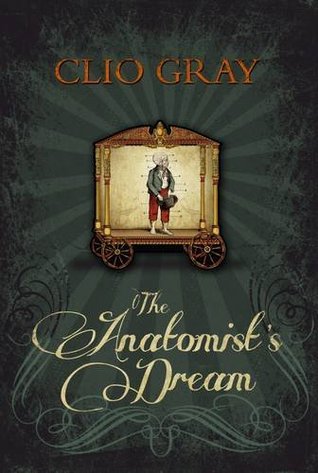‘It’s a taupe,’ announced the doctor, poking at the lump with which a scratchy yellow finger, ‘a French tumour they call it, though couldn’t rightly tell you why. Most unusual – got a bit of hair growing on it too, see here?
Several strands grew, wet-wisped, from a lump the size and shape of a duck’s egg at the bottom of the baby’s head.
‘Might kill him,’ the doctor carried on with scientific stoicism. ‘But probably not, most likely grow a-pace with the rest of him. My goodness though, he does rather resemble the back end of a baboon, don’t you think?’
Philbert is born with a ‘monstrous head’. His mother, who had already named the daughter she thought she was pregnant with, rejects him, returning to work and leaving him with the woman next door. Eventually abandoned by his mother – who runs away with her French lover – and his heartbroken father, Philbert is brought up by Frau Kranz, the neighbour.
The much-anticipated arrival of a carnival in town coincides with Frau Kranz’s realisation that she is dying and that the rest of the town are sharpening their knives, their eyes on Philbert’s pet pig, Kroonk. She sends ‘her Little Maus’ to the fair, anticipating that their love of the unusual will guarantee Philbert a role.

Philbert travels with the fair, making friends with several of the characters, until the day Kwert arrives. Kwert is a ‘Tospirologist and Teller of Signs’. When he places his hands on Philbert’s taupe, Philbert sees scenes from his childhood that he can’t possibly remember.
‘I feel great things for you, Philbert,’ Kwert whispered […] ‘There are many things to come, my little Philbert. I see the shadows of yesterday and tomorrow rising up around you, and it will be hard for you to find your way. But if you’ll grant it, I’ll guide you through the start of your journey and your achievements will be of great wonder.’
What Kwert doesn’t tell Philbert is that before these ‘achievements […] of great wonder’, there will be a number of difficult and dangerous situations which will change Philbert forever.
The Anatomist’s Dream is a tale of how someone’s difference can cause remarkable situations for them and those who come into contact with them. It considers the political situation of the time, which Philbert inadvertently becomes involved in, and the consequences of challenging the status quo.
Philbert’s story is an interesting one – at times it reminded me of Frankenstein – but there were points, particularly in the second half of the book, where there was just too much going on. Events came thick and fast with a huge cast of characters whom I found difficult to distinguish from each other and the plot, which at its core involved a journey, felt as though it was going in a loop rather than forwards. Essentially the novel does loop round as Philbert finds his way back to the fair; it was these sections set in the carnival which I found the strongest. They helped form Philbert and then became indicative of how much he’d changed.
The Anatomist’s Dream touches on themes of belonging, politics and religion. It’s uneven in the telling but nevertheless an interesting concept with an unusual protagonist.
Thanks to Myrmidon for the review copy.

Sounded promising until the huge cast of characters hard to distinguish… something that always puts me off.
LikeLike
Yeah, it was a real shame because I was very much enjoying it until that point. It’s stripped back again at the end but I did feel a bit lost in the middle.
LikeLiked by 1 person
Pingback: The Bailey’s Women’s Prize for Fiction Longlist 2016 | The Writes of Woman